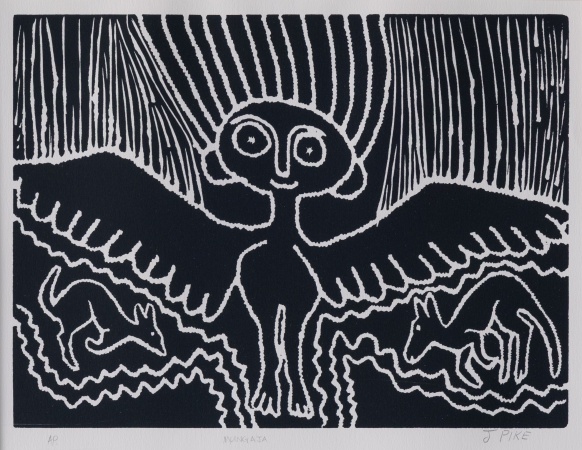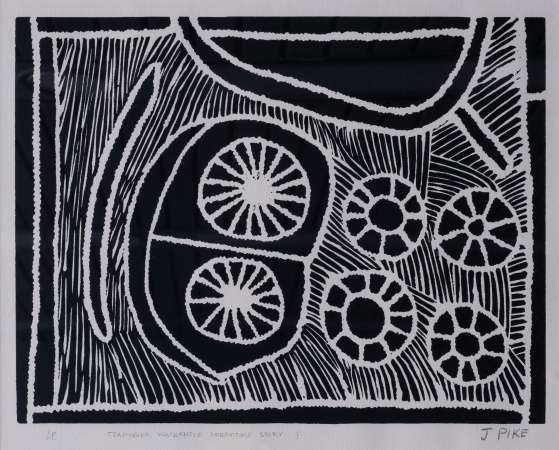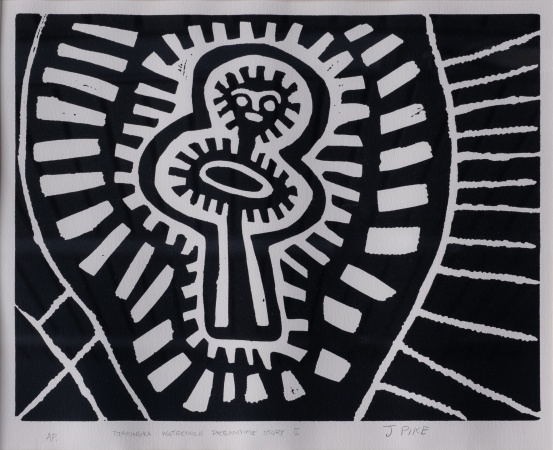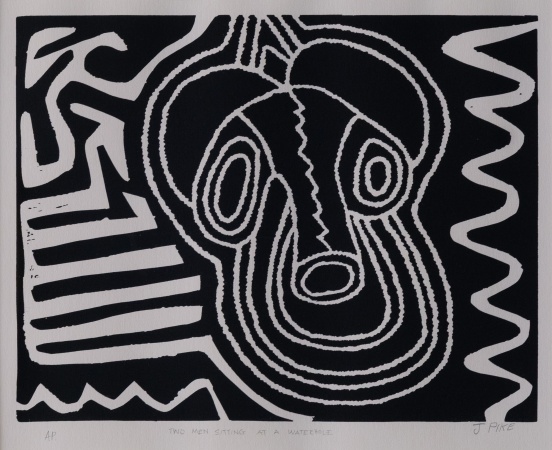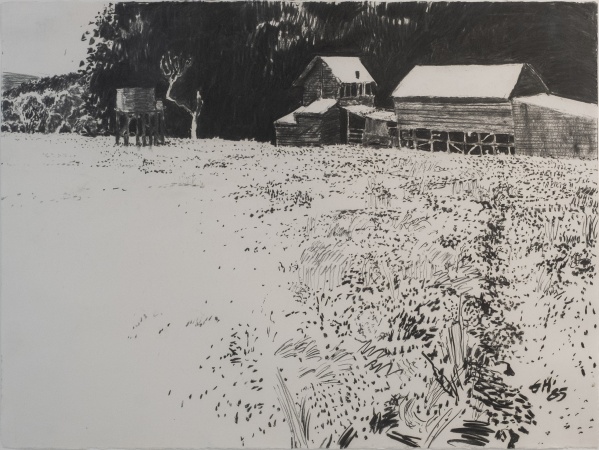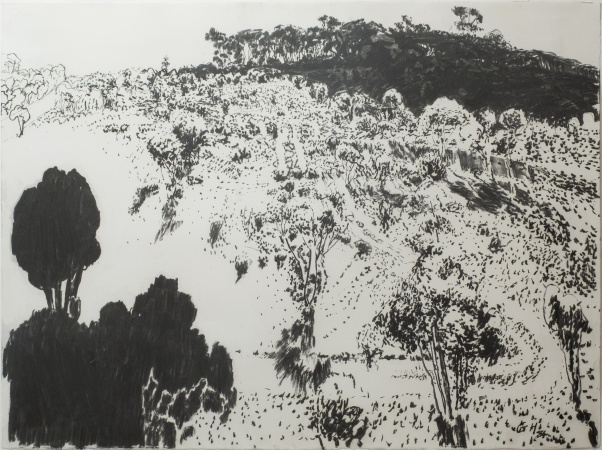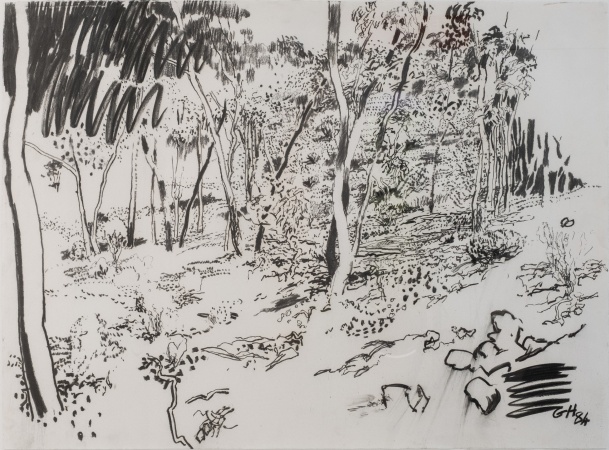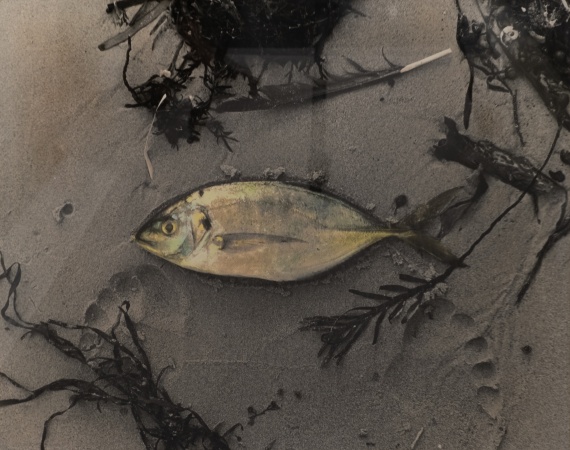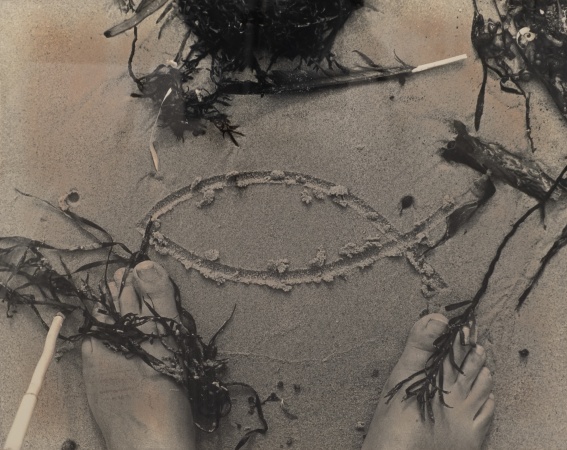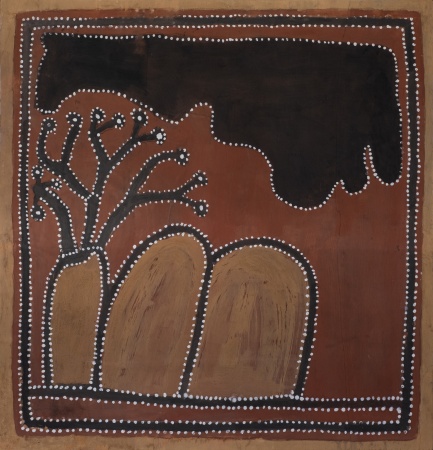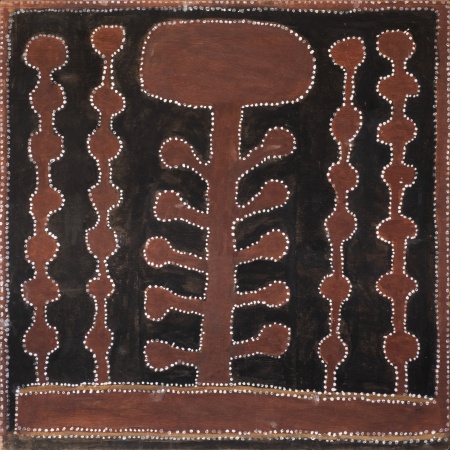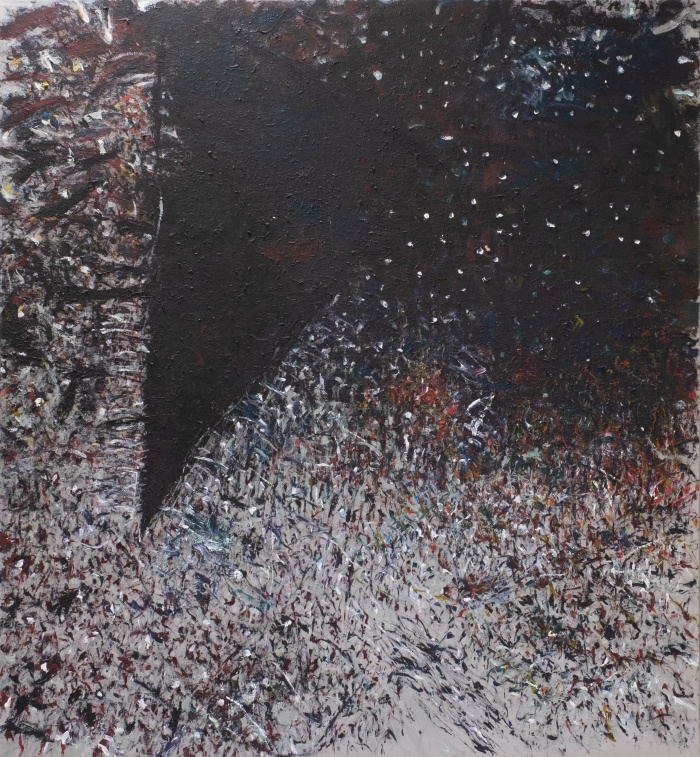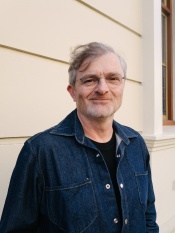
An assembled collection of Australian art at the State Library is a significant string in its bow, a pictorial dimension of its reservoir of cultural assets, and a repository promising ongoing insight and discovery.
Andre Lipscombe, Art Curator
In the lead up to the opening of the new Alexander Library Building in 1985, a collection of 189 Western Australian and Australian artworks were purchased for display with funds from the interior design budget. 40 years on, in 2025, local visual artist, writer, educator and curator, Andre Lipscombe, was invited behind the scenes to explore the State Library’s collection of 1980s artwork and reflect on its significance and enduring value.
Collectively the artworks are a survey of the most trenchant 80s Perth art, particularly strong in painting, printmaking and works on paper including a holding of contemporary photography. It also contains a sprinkling of First Nations art, and a few strong examples of art from interstate, particularly New South Wales, Northern Territory and Tasmania.
Andre Lipscombe
Selected Works
Jimmy Pike
born Great Sandy Desert WA 1940, active 1984, died Derby WA 2002
First Nations artist Jimmy Pike moved into the Kimberley near Fitzroy Crossing from remote Jila Japingka Country as a young man, to become one of WA’s most recognisable Aboriginal artists during the 1990s.
He exhibited in Fremantle in 1982 and then more widely and produced black and white and vividly coloured paintings, Texta drawings and limited-edition lino cut and screen prints. Through his work Pike told the stories of his early life in the Great Sandy Desert where ‘Dreamtime’ people travelled through his traditional Walmajarri country. His figurative imagery was directly and efficiently composed suggesting a powerful radiance to his work. Ngarrangkarnijangka (spirit beings) occupy many drawings in his oeuvre and jilji (sandhills), partiri (flowers) and pamarr (rocks) are recurring subjects drawn from the Great Sandy Desert. Pike studied art during a period in Fremantle Prison with art teachers Stephen Culley and David Wroth, who later established the successful marketing and fashion business Desert Designs in Fremantle, licencing Pike’s designs to produce printed textiles, homewares and clothing. He also authored many stories with his wife Pat Lowe, giving further accounts of traditional life in the desert.
The State Library's art collection holds a group of three black and white screenprints derived from original linocuts. Jimmy Pike is represented in public collections nationally including National Gallery of Australia, Art Gallery of NSW and the Australian Museum.
Mangkaja, 1985, screenprint A/P, 61 x 72 cm (framed) ART0165
Japingka waterhole dreamtime story I, 1985, screenprint A/P, 61 x 72 cm (framed), ART0166
Japingka waterhole dreamtime story Il, 1985, screenprint A/P, 61 x 72 cm (framed), ART0167
Two men sitting at a waterhole, 1985, screenprint A/P, 61 x 72 cm (framed), ART0168
George Haynes
born Kenya 1938, arrived and active WA 1962
British trained and Fremantle based artist George Haynes is regarded to have made a lifetime contribution to representational and figurative art in Perth. This recognition is made in the minds of his many admirers, for his truthful chronicling of light and WA’s urban and remote landscapes in his signature black and white charcoal technique. Haynes’ ability to open our hearts and eyes to the nature of perception, and by extension the precious complexities inherent in the interconnected natural world around us, is also a matter of recognition.
The State Library's art collection holds a group of Haynes charcoal drawings of Southwest landscapes spanning 1984-85. Dappled sunlight upon trees, shadows of passing clouds and familiar bush locations are Haynes' focus in this group of three drawings, each usually produced in a single four-hour sitting. Evelyns studio, 1985, is in fact an abandoned abattoir shed on a farm in Margaret River, a regular destination for Haynes and his partner, artist Jane Martin.
George Haynes is represented in all state and national public art collections.
A bush track, 1984, charcoal, 89 x 106 cm (framed), ART0110
A gully, 1984, charcoal, 89 x 106 cm (framed), ART0111
Evelyns studio, 1985, charcoal, 89 x 106 cm (framed), ART0112
Miriam Stannage
born Northam WA 1939, active 1962, died Perth 2016
Miriam Stannage was an innovative, intellectual and eclectic WA artist, who emerged after attending art classes when she was 23 years old in 1962. Throughout her fifty‑year career she continued to challenge and change her practice, working through many styles, media and approaches while actively resisting being defined as a ‘woman artist’. Her Christian beliefs were the foundation of her life and work, and a source of her independence.
Stannage had capacity to process local and international influences and maintained her interest in sight and perception, in both a literal and metaphorical sense. She engaged with contemporary events and news reportage, utilising and subverting the visual language of print media. She often incorporated a collage aesthetic, a tactic linked to her exploration of existential themes such as mortality, conflict and a quest for the meaning of life. Stannage is best known for photographic and print media work that she produced from the 1980s.
The State Library's art collection holds a pair of hand coloured black and white photographs from Stannage's Blind Series. The images draw a comparison between a dead fish/fish out of water on the seashore and the inscribed symbol of the Ichthys/Jesus fish, an acronym for the son of God and Christian faith. The images include evidence of the presence of the artist, indicative of Stannage’s commitment to her faith.
Stannage’s artworks are held in all state and national collections, including the Australian National Gallery in Canberra and the Art Gallery of Western Australia.
Blind series the fish, 1984, hand coloured silver gelatin photograph, 40 x 50 cm, ART0182
Blind series the fish, 1984, hand coloured silver gelatin photograph, 40 x 50 cm, ART0183
Paddy Tjamatji Jampin
born Turkey Creek WA 1912, died 1996
Senior Warmun/Turkey Creek First Nations artist Paddy Tjamatji Jampin painted the stories of his ancient ancestors and impact of post-colonial events and massacre histories on his people. Tjamatji was a founding member of the contemporary painting movement at Warmun and one of the first to abandon cattle properties after the strike by Kimberley station workers in the mid-1970s. He was the uncle to Juluma Rover Thomas and influenced Thomas to take up art and inspired others including Queenie McKenzie and Lena Nyadbi, based at Warmum Art Centre, governed by the Gija community.
The State Library's art collection holds two substantial paintings by Tjamatji about East Kimberley Country and Bedford Downs, a Kimberley Station associated with a massacre of Aboriginal people in 1924.
Paddy Tjamatji Jampin is held in all major public art collections in Australia and internationally.
Lissadell country, 1984, natural earth pigments, natural and synthetic binder on plywood, 120 x 125 cm, ART0189
Palms on Bedford Downs, 1984, natural earth pigments, natural and synthetic binder on plywood, 120 x 125 cm, ART0190
Brian Blanchflower
born UK 1939, arrived and active WA 1972
Brian Blanchflower expresses a dimension of feeling and sensation about the interconnectedness of all living and non-living things in his painting.
The range of gestures and marks captured in You belong to the night: Homage to Edgard Varèse, reference and emphasize the chanting mesmeric lyrics and timbre of French/American composer Edgard Varese’s 1961 composition Nocturnal.
Varèse was a leader in the development of electronic music. His musical aesthetic informed exploration of sound as ‘living matter’ and ‘musical space’, as an open aural experience bounded by a conceptual idea known as ‘organised sound’.
This is a similar sentiment explored in Blanchflower’s painting tactics. The painted surface, built up with slashes and dobs of thick paint is an outcome that connects to universal things, including matter and sound, and like music, is an abstract link to things beyond the scope of the picture plain.
The most important ingredient in my painting is that which is not painted; the unseeable the unknowable the unnamable – Brian Blanchflower
Blanchflower is a senior and highly accomplished artist of his generation. He has artworks in every major public and institutional collection and museum in Australia, as well as throughout Europe and the United States.
You belong to the night: Homage to Edgard Varèse, 1984, synthetic polymer paint, oil stick and sand on poly / cotton canvas, 85 x 118cm, ART0053
The holding has a strong relevance to the WA community in drawing artworks together by artists who were, and are still in many cases, active in WA. These artworks provide a unique historical perspective upon local mainstream artistic priorities and politics, across the breadth and range of creative tactics and making processes. They are also complex and rich in aesthetic significance and local stories.
Andre Lipscombe
Andre Lipscombe
Andre Lipscombe is a visual artist, writer, educator and Curator of the City of Fremantle Art Collection. He has a longstanding career in the visual arts sector in WA including roles in museums and artist run organisations working in both regional and metropolitan settings. He has knowledge and expertise in both contemporary and historical arts practice in WA.
